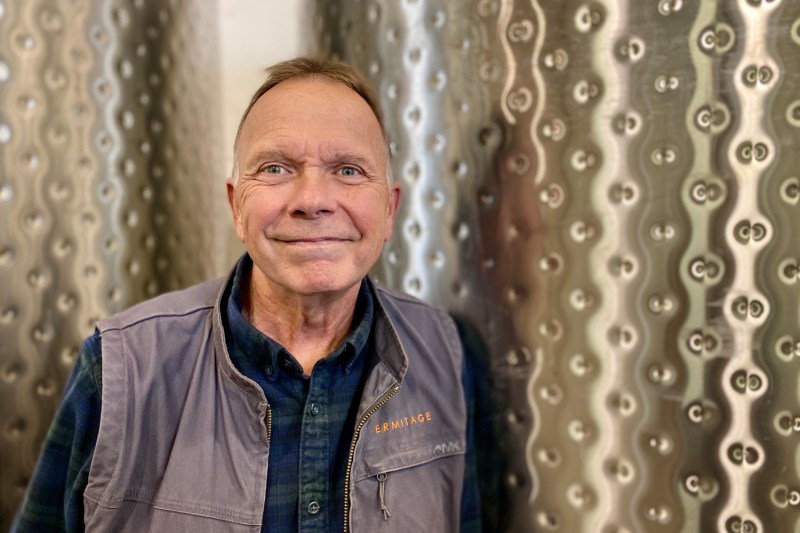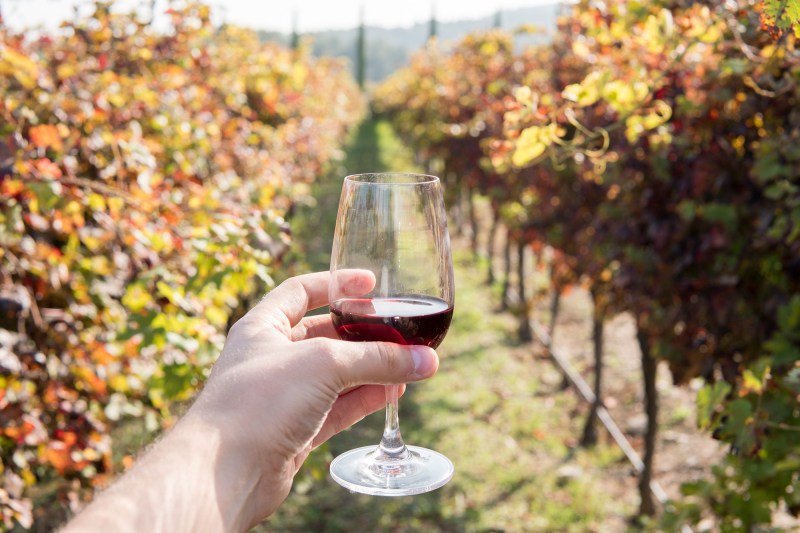Terroir is a trendy term that relates to the flavor and nature of a food’s origin. It began in wine, where it’s still a prominent concept, but has crept into everything from coffee and tea to baked goods and specialty salts. Has the t-word tread too far?
It began, like so many wine-related things, in France. Terroir was used as a way to account for the place-ness of a particular wine. In other words, the many conditions at play that make Champagne uniquely Champagne and Burgundy uniquely Burgundy. Over the generations, we learned more and more about how these conditions — the climate, the soil type, the elevation — shaped the resulting wines. Now, we have more distinct wine regions on the global wine map than ever, with some 260 American Viticultural Areas (AVAs) in the states alone, with a few more added every year.

Wayne Bailey runs Youngberg Hill in the Willamette Valley. The way he describes terroir would translate to pretty much any crop harvested from the ground. “Terroir is everything that in any way impacts the growth and development of the fruit on the vine,” he says. It is a truly singular thing, he adds. “It’s the one thing that nobody else can duplicate,” he says. “No one else can make wine from my fruit therefore no one will be able to make a wine that tastes like mine.”
The terroir aspect can be amplified too and Bailey says that’s definitely the case with an ultra-expressive grape like Pinot Noir and Chardonnay, his specialties. He doesn’t think it’s too hard to go overboard with terroir, at least in wine, but there are some misconceptions.
What is Terroir?
“Most think of terroir as it relates to the land and weather, but those are very large categories as land includes soil, altitude, slope, drainage, orientation, etc. while weather includes both macro and microclimates, temperature, moisture, seasonal timing, etc.,” Bailey says. He says it relates to the agricultural approach, too, meaning the opportunity for even further expressions of terroir. “It includes the farming practices as well, including pruning, cultivation, irrigation, leaf removal, and anything else that is done by the farmer while growing the grapes,” he says.
Cara Morrison is in charge of making Chardonnay at Sonoma-Cutrer. She says honoring terroir means farming according to your specific site, which is uniquely it is own and can produce its own flavor profile. “Our Les Pierres Vineyards is made up of incredibly rocky soils, which gives the lemon-lime and mineral aromatic notes,” she says, something that tends to come out of Burgundian Chardonnay. “Although, the weather is warmer and dryer in Sonoma County, so we need to farm accordingly, which does give the Sonoma-Cutrer Chardonnay different nuances than wines from anywhere else.”
Who Uses the Term Terroir?
Morrison says it doesn’t have to stop at wine. “As for other industries, if it truly fits using the concept of terroir, it is worth exploring,” she says. “We see terroir differences with our barrels — wood from different forests in France vary in flavor due to the amount of rainfall and sunlight. There’s the science to testing the various varieties in different terroirs, and the art of defining the differences.”

These differences, she admits, can take generations to find out but that’s what keeps wine and sibling industries fascinating, she contends. Undoubtedly, one of the positives of paying attention to terroir is the environmental and sustainability pros that can follow. For example, if a grower is looking to really showcase the uniqueness of their crop, wouldn’t it make sense not to dampen it in any way? This tends to translate to less-interventionist farming philosophies like organic, biodynamic wine, regenerative, and more, which are all easier on the earth than more conventional methods.
So why should wine only be able to dabble in the terroir party? Why not coffee, pears, even hazelnuts? I mean, it’s even been adopted by cultural avenues, like music (think Nashville sound versus Detroit). For one, winemaking tends to involve the most opportunity for terroir to shine through. From Mother Nature’s prominent influence and farming style to barrel types and all of the countless microbiology along the way (the yeast, the bacteria), terroir exerts itself throughout. Moreover, wine is a living creature and constantly evolving, essentially extending and evolving that sense of terroir.
Other sectors can’t be blamed for taking on the term, as it’s sexy and a great selling point. Sibling industries like coffee, tea, as well as grains that go into spirits, and hops that go into beer are wise to take it on. But a bakery touting its terroir? Do its muffins really taste different than if they were made a few regions over? Perhaps. But these differences are less easily pinpointed as they tend to involve the microbiology (different yeast strains, for example) more than the detectable differences in flavor. And, unlike with wine, your local bakery probably doesn’t have tasting notes and somebody behind the counter telling you why that muffin is such a unique snowflake (not yet, at least).
For now, terroir will continue to run rampant in wine, as both a marketing tool but also one with often perceptible results. As for other sectors, we’ll have to wait on the science and see. There’s certainly no reason why a blueberry grown in Milo, Maine would be unlike any other blueberry on the planet. You just have to be able to back it up with the unique context that makes it so. Or, at the very least, the context for a good story as that’s essentially what terroir is anyway.
Expect to see more and more of it in the drinks world anywhere there’s regionality. Think, American vodka versus Russian vodka, Wyoming whiskey versus Kentucky bourbon, and the many variations of IPA beers. Terroir can enhance the homegrown quality and philosophy of the crop or the resulting product in question, adding more variety to the marketplace. We just have to make sure there’s some substance behind all that marketing muscle.


